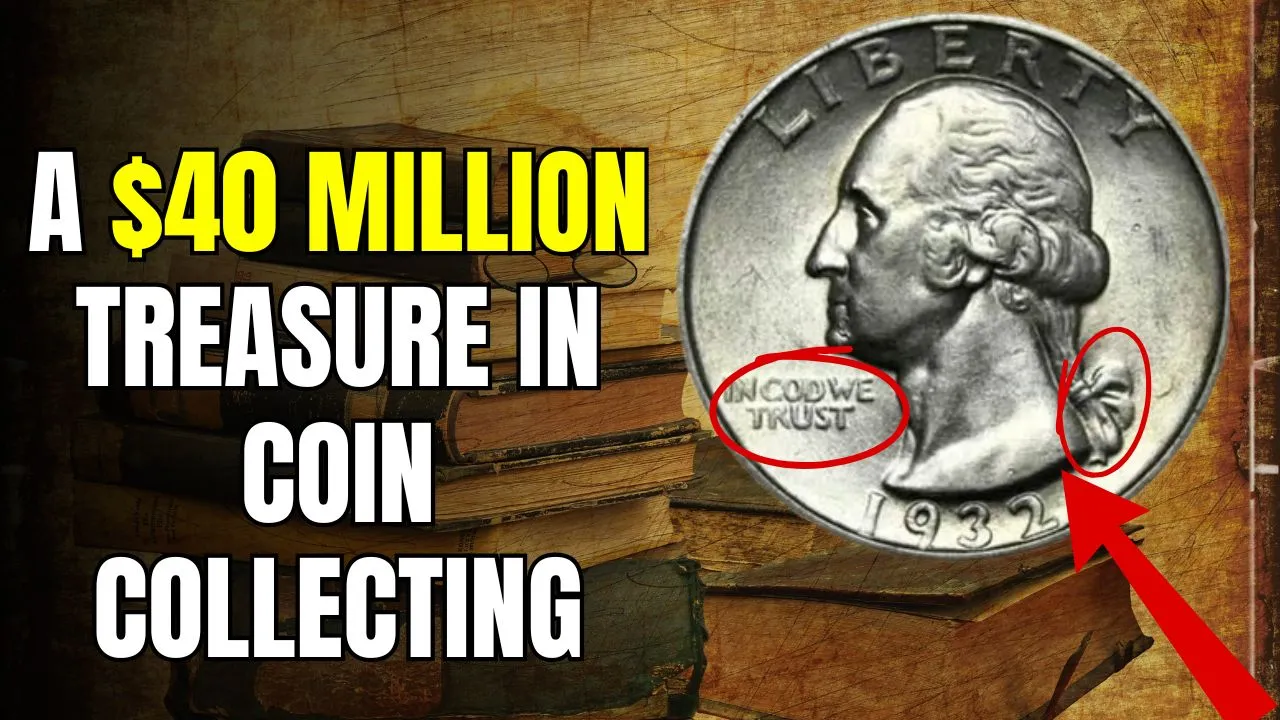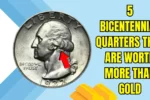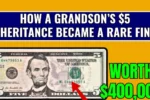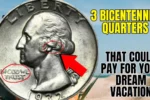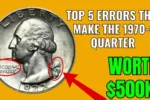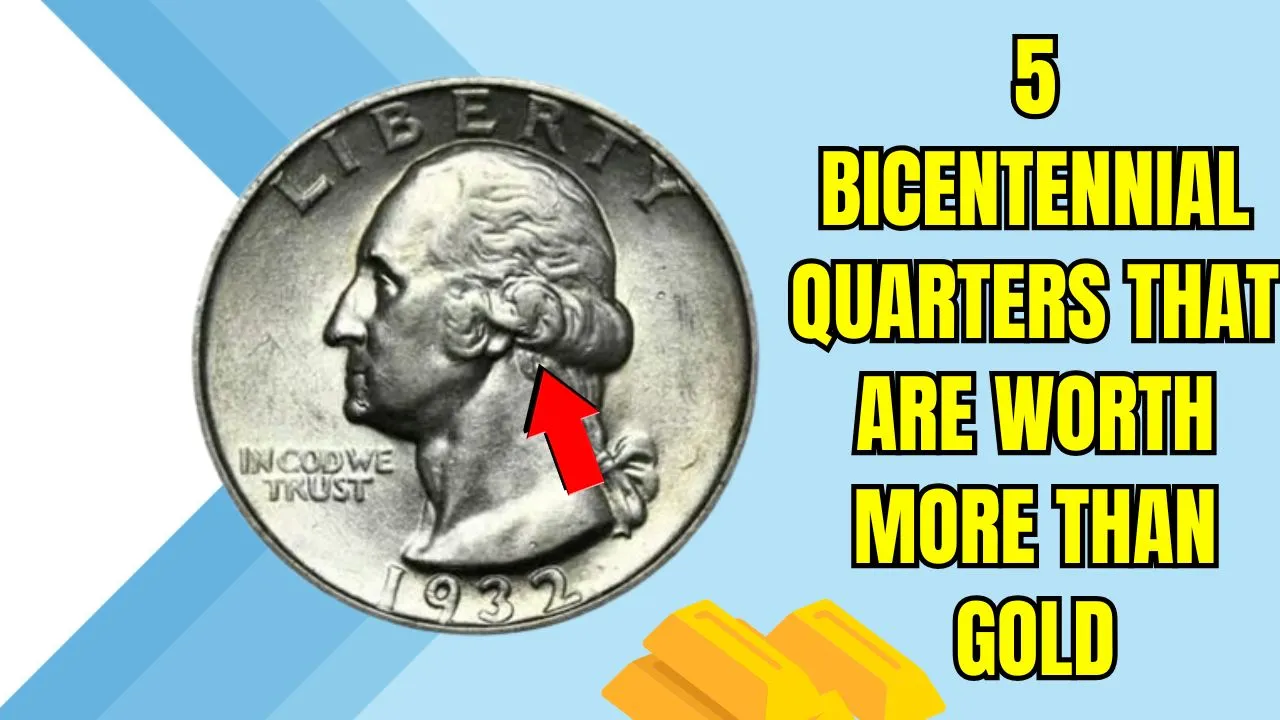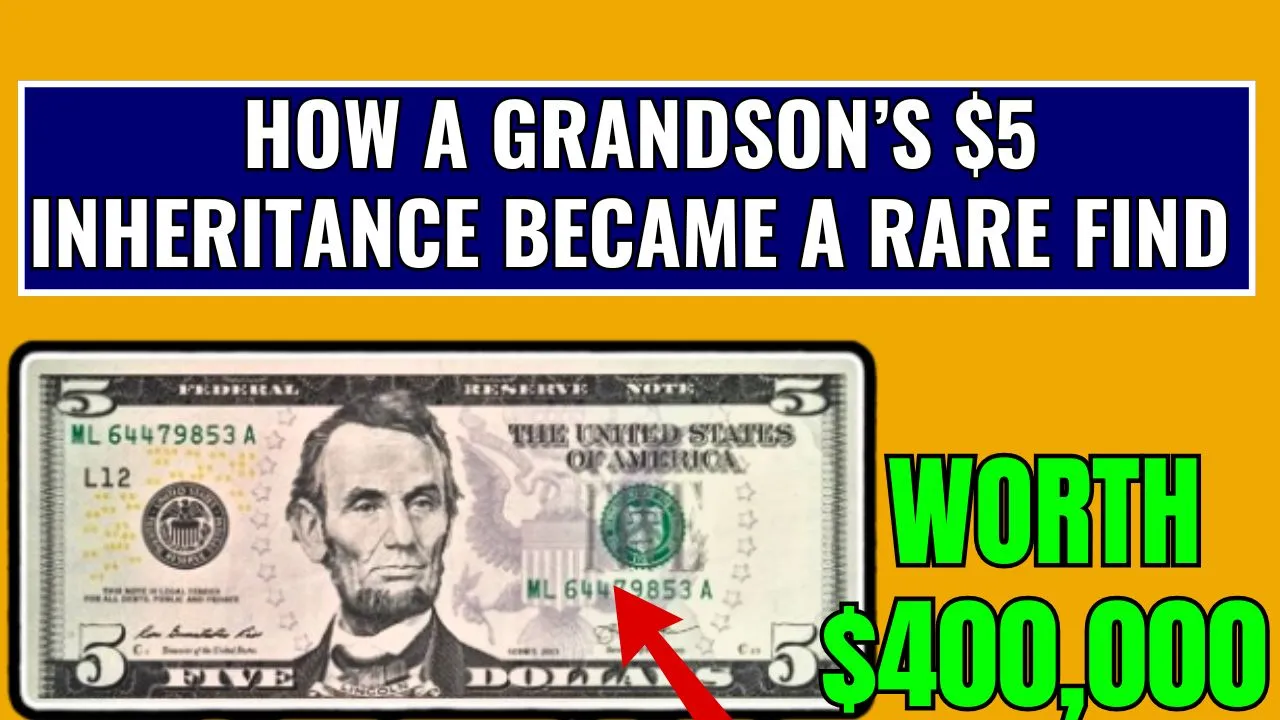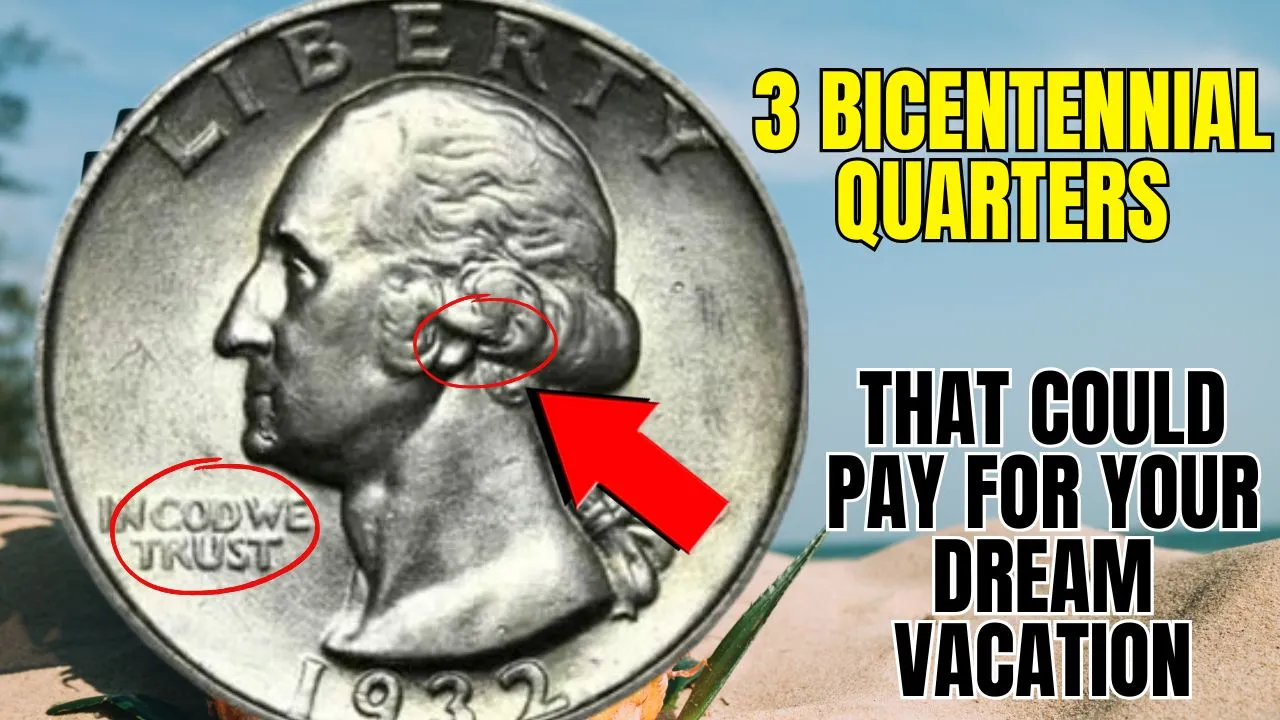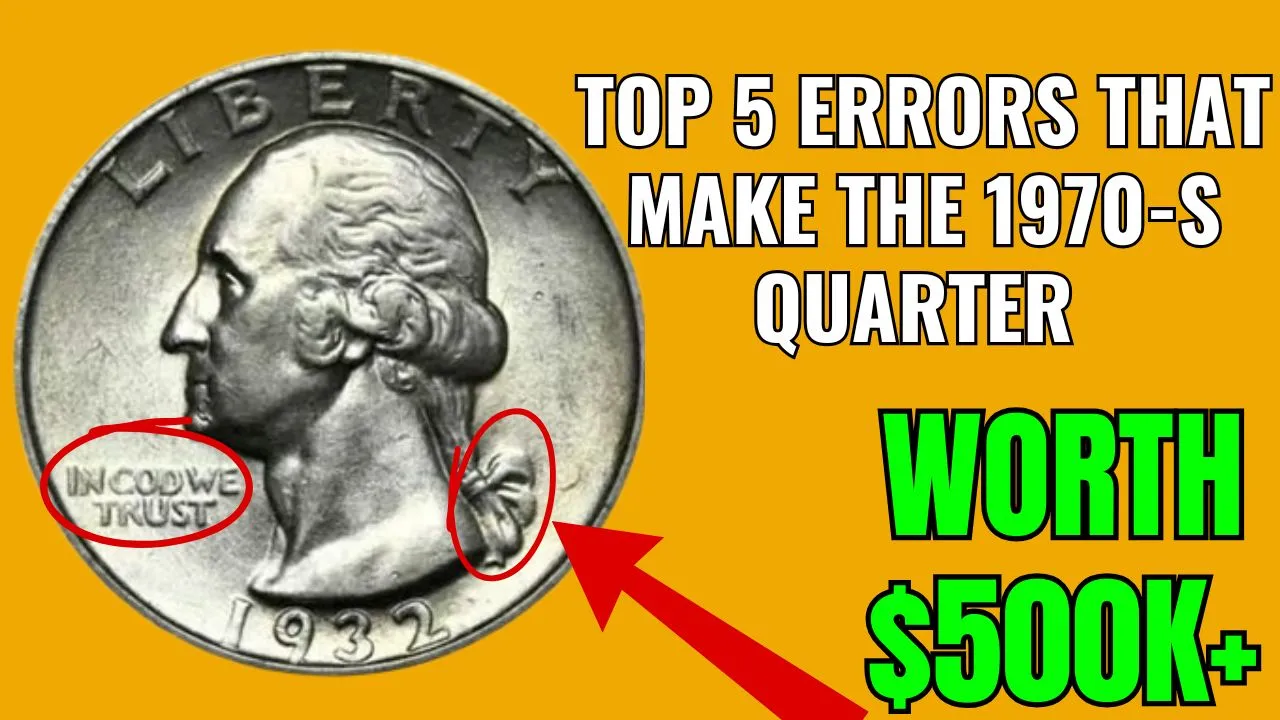The Rare Bicentennial Quarter: Coin collectors are always on the lookout for rare and valuable coins, but few could have predicted the staggering value of the Rare Bicentennial Quarter, recently appraised at nearly $40 million. This 1976 commemorative coin, minted to honor America’s 200th anniversary, has become a prized possession among collectors thanks to its extraordinary rarity and unique minting error.
While most Bicentennial Quarters are worth no more than their face value of 25 cents, this particular coin is an outlier. It joins an exclusive group of coins like the 1937-D 3-Legged Buffalo Nickel and the 1916-D Mercury Dime, which have also fetched multimillion-dollar price tags. Let’s explore what makes these coins so special and why the Bicentennial Quarter is the talk of the numismatic world.
Overview of Rare Coins and Their Exceptional Values
Here’s a quick snapshot of some of the most valuable coins in U.S. history, their key features, and their approximate worth:
| Coin | Unique Feature | Estimated Value |
| 1976 Bicentennial Quarter | Double-strike with misaligned design | Nearly $40 million |
| 1937-D Buffalo Nickel (3-Legged) | Missing front leg on the buffalo | Over $5 million |
| 1916-D Mercury Dime | Extremely low mintage | Over $5 million |
| 1901-S Barber Quarter | Very low mintage, highly sought-after | Over $5 million |
The $40 Million Bicentennial Quarter
The Rare Bicentennial Quarter was created as part of a special minting to commemorate the United States’ bicentennial in 1976. Most of these coins are worth little more than their face value, but one unique quarter has redefined its worth due to an extremely rare minting error.
What Sets It Apart?
This quarter’s value lies in its double-strike error combined with a misaligned die, which produced a distorted, double-image of the eagle and drum on the reverse side. Minting errors of this nature are incredibly rare, especially for modern coins, making this one an absolute standout in the world of coin collecting.
For collectors, the appeal of this coin is not just in its rarity but in its unmatched uniqueness. It’s a perfect example of how errors in coin production can elevate a seemingly ordinary coin into a multimillion-dollar masterpiece.
Why Are Minting Errors So Valuable?
Minting errors turn ordinary coins into rare collectibles by introducing uniqueness into what is usually a mass-produced process. Here are a few reasons why such coins are so valuable:
- Rarity: Errors like double-strikes or misaligned designs occur in only a tiny fraction of coins.
- Visual Appeal: Anomalies stand out visually, making these coins fascinating to collectors.
- Storytelling: Error coins tell a story of production mishaps and historical quirks, adding a narrative element to their appeal.
The 1937-D 3-Legged Buffalo Nickel
Another legendary coin, the 1937-D Buffalo Nickel, is known for its peculiar 3-legged buffalo design. This error occurred when a mint worker over-polished the die, accidentally removing one of the buffalo’s front legs.
Why It’s Worth Over $5 Million
- Low Mintage: This error was quickly corrected, meaning very few coins were struck with this anomaly.
- Collector Demand: Its uniqueness makes it one of the most desirable coins in U.S. history.
- Condition Matters: High-grade examples in excellent condition can fetch millions.
The 1916-D Mercury Dime
The 1916-D Mercury Dime is another superstar in the coin-collecting community, not because of a minting error but due to its incredibly low mintage. Only 264,000 of these dimes were produced, making them extremely rare.
Why It’s So Valuable
- Scarcity: With fewer coins in existence, demand far exceeds supply.
- Design Legacy: Designed by Adolph A. Weinman, this dime is celebrated for its artistic beauty.
- Condition: Uncirculated or near-mint condition examples can command over $5 million at auction.
The combination of limited production and enduring demand makes the 1916-D Mercury Dime a cornerstone of serious coin collections.
The 1901-S Barber Quarter
The 1901-S Barber Quarter may not feature a minting error, but its exceptionally low mintage of just 72,664 coins makes it a prized collectible. This coin was part of the Barber series, which spanned dimes, quarters, and half dollars.
Why Collectors Love It
- Exclusivity: With so few coins produced, finding one in excellent condition is incredibly rare.
- High Demand: Numismatists consider it a must-have, particularly in uncirculated condition.
- Historic Significance: It represents a pivotal era in U.S. coinage history.
High-grade examples of the 1901-S Barber Quarter routinely sell for over $5 million, cementing its place among the most valuable coins in U.S. history.
Tips for Identifying Rare Coins
Finding a rare coin can be a thrilling experience, but it requires careful attention to detail. Here’s what to look for:
- Errors: Look for double-strikes, missing details, or other anomalies.
- Low Mintage: Coins produced in limited quantities are more likely to be valuable.
- Condition: Coins in pristine, uncirculated condition are significantly more valuable.
- Historical Context: Coins tied to significant events often command higher prices.
If you suspect you have a rare coin, it’s best to consult a professional appraiser or numismatist to determine its value.
FAQs
1. What makes the $40 million Bicentennial Quarter unique?
Its double-strike error and misaligned die make it a one-of-a-kind collectible, sought after by collectors worldwide.
2. Are all 1937-D Buffalo Nickels valuable?
No, only the version with the 3-legged buffalo error is worth millions. Other Buffalo Nickels are typically valued at much lower prices.
3. Why is the 1916-D Mercury Dime so rare?
Its rarity is due to its low mintage of only 264,000 coins, combined with its enduring demand among collectors.
4. Can modern coins be valuable?
Yes, coins with minting errors or unique features, like the $40 million Bicentennial Quarter, can have extraordinary value.
5. How do I verify if my coin is rare?
Examine its condition, minting errors, and production year. Professional appraisal is recommended for accurate valuation.
Final Thoughts
The story of the Rare Bicentennial Quarter worth $40 million is a reminder that extraordinary value can sometimes be found in the most unexpected places. Whether it’s a minting error or low mintage, coins like these continue to capture the imagination of collectors around the world.
If this inspires you to dig through your old change or revisit a family coin collection, you might just uncover a hidden gem. Share your thoughts or discoveries in the comments below—your next find could be the story everyone’s talking about!
